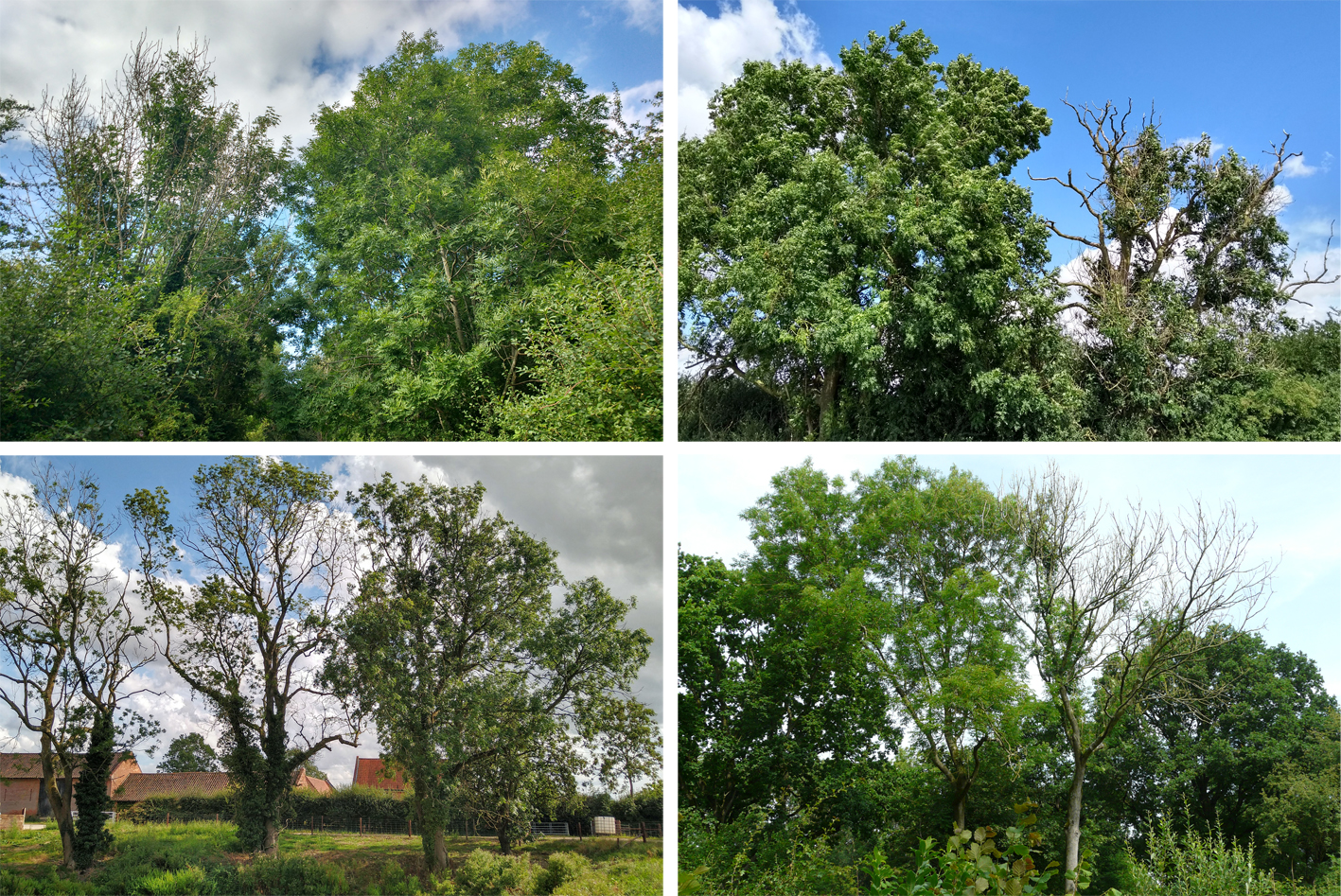Local botanists will be all too familiar with ash dieback. Norfolk and Suffolk are two of the worst affected counties in the UK, with many trees being slowly killed or needing to be felled to protect people and livestock. This will have destructive consequences for the landscape, wildlife and people’s enjoyment of the natural environment, unless we take action to enable the ash population to recover from the dieback epidemic.
During our research at the John Innes Centre, we have discovered that a significant minority of ash trees, perhaps 5-10%, seem to have good resistance to ash dieback. This means there is a good chance of UK’s ash population recovering by natural selection for dieback resistance, but this is a slow process. In a new project, we are setting up a nursery of healthy male and female parental trees which will be allowed to intercross and produce seed which is likely to have natural genetic resistance to ash dieback. This will greatly speed up the process of producing a new, disease-resistant population of ash. Seed from this nursery will be distributed to anyone who wishes to sow it to produce the next generation of ash trees for East Anglia.
We would like your help to identify trees in Norfolk and Suffolk which may have good resistance to ash dieback. We need you to tell us about trees which are obviously healthier than other ash trees nearby of similar size. They don’t need to be completely healthy but they should have a fuller crown than other trees nearby, with little damage to the main stem or branches. We need trees which are mature or nearing maturity, at least 10 feet / 3m high, with at least one branch less than 15 feet / 4.5 m from the ground from which we can take cuttings. A good place to look is any area with a dozen or more ash trees, such as hedgerows and woods. We are interested in native trees, so please avoid areas where trees have been planted in the last 30 years, such as housing estates and verges of major roads, which may have used imported stock.
The photos show you the kind of contrast in symptoms we’re looking for. As the healthier tree in each picture is close to other, much sicker trees, it’s likely to have more effective genes for resistance to ash dieback.
When you find an ash tree which is obviously healthier than others nearby, please report it here. The information we need is: your name and email address, where the healthy tree is (ideally with a What3Words location or GPS coordinates), how far it is from the nearest diseased ash tree, how tall the healthy tree is and whether or not it has seed, and the name of the landowner if you know it. Please take a photo of the healthy tree and the nearest sick ash tree, which will help us decide if should add the tree you’ve identified to our collection.
Thank-you!
James Brown and Elizabeth Orton
John Innes Centre, Norwich

